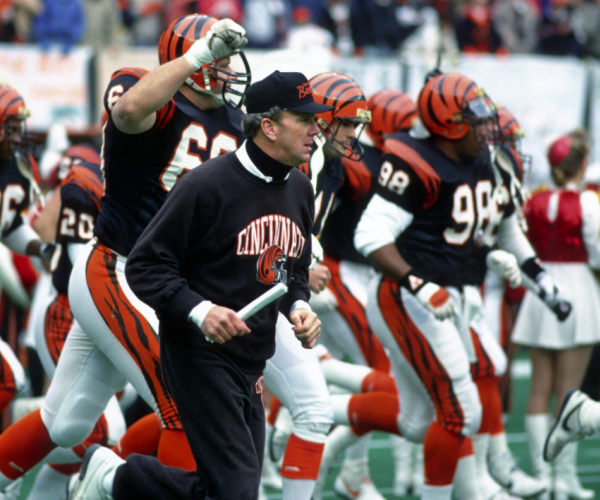
Cincinnati Bengals

1966 Cincinnati
The genesis of the Cincinnati Bengals dates back to 1967, when Paul Brown, former head coach of the Cleveland Browns, decided to found a new team in the American Football League (AFL). Brown, disenchanted after his departure from the Browns, was looking to establish a new franchise in Ohio and ultimately chose Cincinnati thanks to a deal to build a multi-purpose stadium that would host both baseball and soccer games. This stadium, known as Riverfront Stadium, would become the Bengals' home for the next three decades. The Bengals joining the AFL, and later the NFL after the leagues merged in 1970, ushered in a new era of professional soccer in Cincinnati.
Rise and Fall: The Bengals' Roller Coaster Ride
In their early years, the Bengals struggled to establish themselves within the NFL. Under the leadership of Paul Brown, their founder and first head coach, the team began to forge an identity based on tactical innovation and finding talent in unexpected places. Brown, a soccer visionary, implemented draft strategies and policies that would lay the foundation for the franchise's future success.
The Emergence in the NFL
As the 1970s progressed, the Bengals began to reap the rewards of their hard work. The adoption of Ken Anderson as the starting quarterback marked a before and after for the team. Anderson, hailing from Augustana College, a little-known institution in soccer, became one of the league's most accomplished passers, setting numerous records for the franchise and leading the team to several playoff appearances during the decade.
The Golden Era and the Super Bowl Finals
The 1980s represented the heyday of the Bengals, an era defined by the innovative leadership of head coach Forrest Gregg and the formidable presence of players like Anthony Munoz, one of the most accomplished offensive linemen in NFL history. In 1981 and 1988, the Bengals reached the pinnacle of NFL success by winning the AFC championship and advancing to the Super Bowl. However, on both occasions, they ran into the San Francisco 49ers, led by the legendary Joe Montana, and suffered painful defeats that denied them the Lombardi Trophy.
Rivalries and Team Culture
One of the most gripping narratives of this era was the growing rivalry with the Cleveland Browns, a team also founded and previously led by Paul Brown. This rivalry was not only based on the geographic proximity of the two teams in Ohio, but also Brown's personal history with the two franchises. The clashes between the Bengals and Browns became epic battles that captured the imagination of fans and added a rich layer of drama to the Bengals' legacy.
Legacy and Learnings.
The Bengals' years of rise and fall during the 1970s and 1980s left a lasting legacy, not only in terms of on-field accomplishments, but also in the lessons learned from adversity. Through triumphs and challenges, the Bengals forged a unique identity, characterized by resilience, innovation and the constant pursuit of excellence. Although they failed to capture the coveted Super Bowl trophy during this golden era, their story continues to inspire generations of players, coaches and fans, reminding us of the importance of perseverance and passion in the pursuit of success.
The "Bungles" Era: Difficulties and Challenges
The 1990s and early 2000s were a period of struggles for the Bengals, earning them the derogatory nickname "The Bungles" due to poor performance and questionable management decisions. During this time, the team struggled to find consistency both on and off the field, resulting in a long drought of playoff appearances and winning records.
Rebirth and Hope: The Bengals' New Era
However, the tide began to turn for the Bengals in the 2010s, culminating in an impressive renaissance during the 2021 season. Under the leadership of young quarterback Joe Burrow, the Bengals won the AFC championship and advanced to Super Bowl LVI, their first Super Bowl appearance in 33 years, though they ultimately fell to the Los Angeles Rams. This resurgence not only revitalized the franchise but also reignited the passion and support of their fans, ushering in what many hope will be a new era of sustained success for the Bengals.
The stars of their firmament
A team with a rich and varied history in the NFL, the Cincinnati Bengals have been home to some of the most iconic and transformative figures in American soccer. This legacy of excellence is embodied in several players and coaches whose influence has transcended the boundaries of the playing field to become true icons of the sport.
Paul Brown: The Founding Architect
Paul Brown is not only recognized for being the founder of the Bengals, but also for being one of the most innovative minds in the history of American soccer. His vision for the team and the sport itself revolutionized many of the strategies, coaching practices and team management approaches that are standard in the NFL today. Brown brought with him a philosophy of smart play, unwavering discipline and a meticulous approach to scouting and player development that laid the foundation for the future success of the franchise.
Ken Anderson: Precision Under Center
Ken Anderson, considered one of the most accurate quarterbacks of his era, left an indelible mark on Bengals annals. His ability to direct the offense, combined with surgical precision in his passing, made him one of the most respected and successful leaders in team history. Anderson led the Bengals to their first playoff appearances and set numerous team records, some of which remain to this day. His legacy goes beyond statistics, as he epitomized grace and leadership on the field.
Anthony Muñoz: The Giant of the Offensive Line
Anthony Munoz, widely regarded as one of the best offensive linemen in NFL history, is a legend not only within the Bengals but throughout the sport. His dominance on the offensive line, protecting the quarterback and opening up lanes for the ground game, was a key piece in the team's success during his career. Muñoz combined strength, agility and technique at a level rarely seen at his position, earning the respect of teammates and opponents alike. His impact transcended the playing field, becoming a role model for his integrity, dedication and commitment to the community.
Other Legendary Figures
In addition to these iconic figures, the Bengals have been home to other notable players and coaches who have contributed significantly to the team's rich history. From innovative strategists to exceptionally talented athletes, the list of those who have left their mark on the franchise is extensive and diverse. Each has brought their own story of achievement, excellence and passion for the game, contributing to the Bengals' enduring legacy in the NFL.
These legends have served not only as pillars of the Bengals' success on the field, but also as examples of the impact that sports can have on the lives of individuals and the communities they serve. Their legacy is a testament to the greatness achievable when talent is coupled with hard work, dedication and team spirit.








































